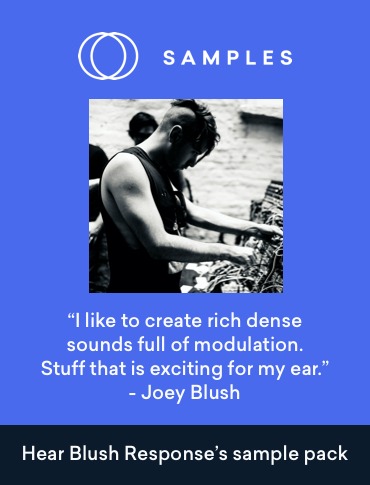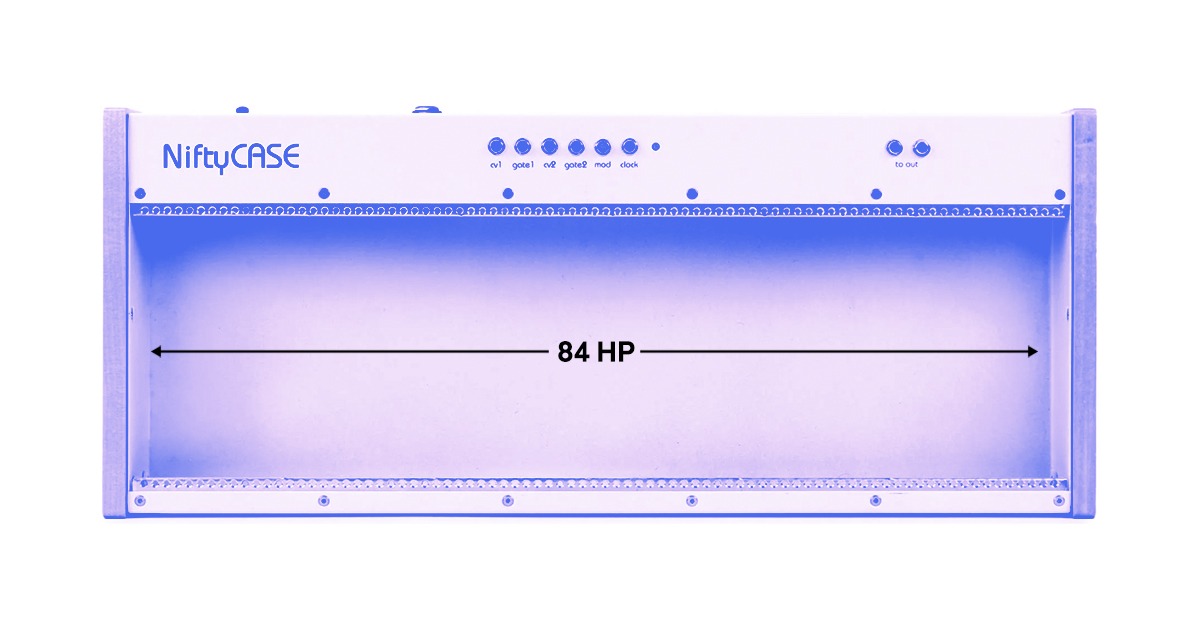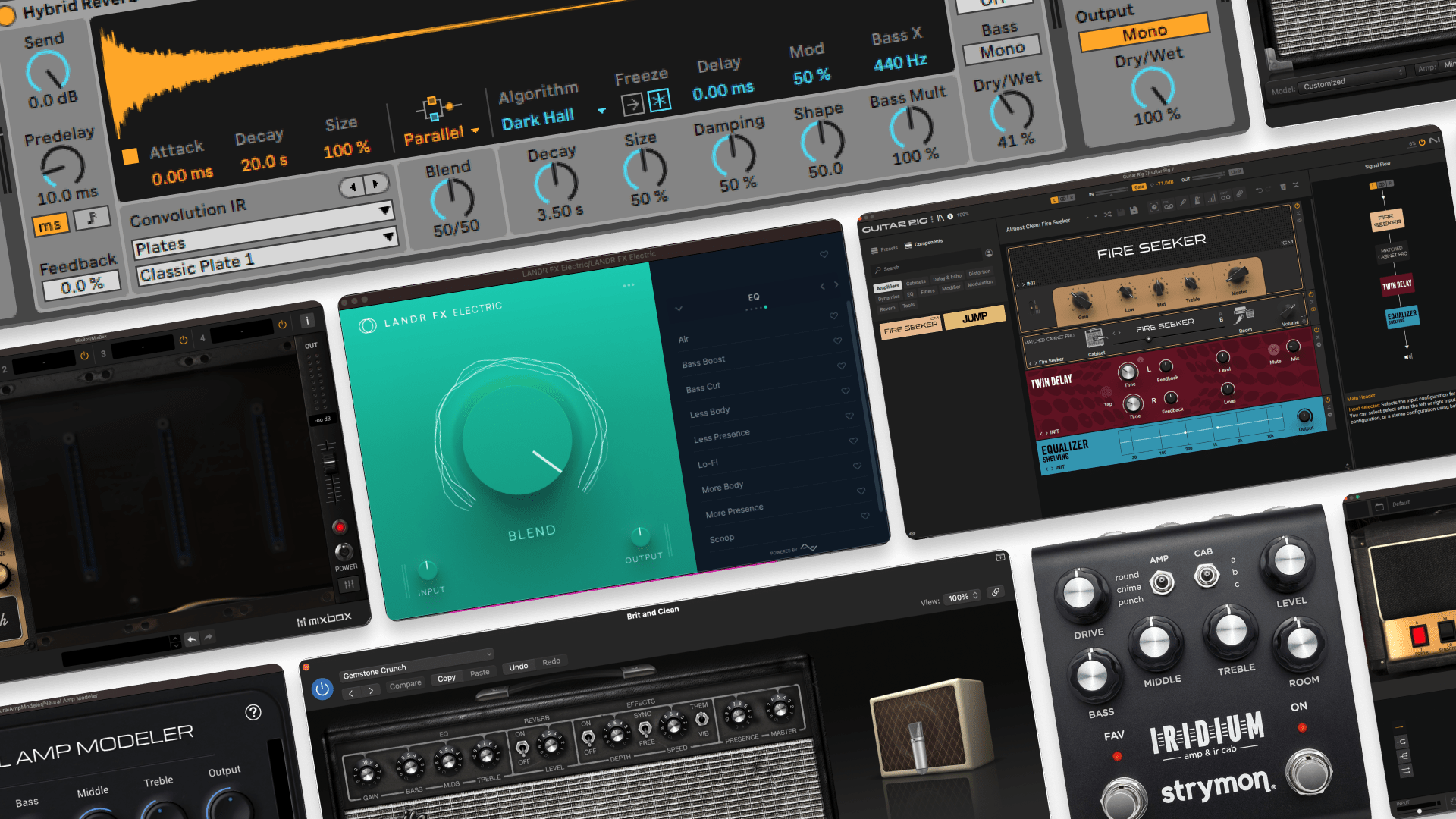
Modular Synth: The Beginner’s Guide to Eurorack

Modular synth is taking over the world.
This once uncommon synthesis type has become the main arena for sonic experimentation in electronic music—and beyond.
Modular synthesis has a rich history that dates back to the earliest electronic instruments. And its flexibility and versatility are second to none.
But getting started with modular isn’t easy. It’s complicated and expensive with a steep learning curve.
Even so, it doesn’t have to be intimidating. The sound design possibilities of modular synthesis are incredible, so it’s worth it.
In this guide I’ll go through everything you need to know to decide if modular is for you and how to take your first steps.
Let’s get started.
What is modular synthesis?
Modular synthesis is an open-ended approach to synthesis in which different modules in a customizable system are interconnected using physical patch cables. Each module in a modular system is specifically designed to carry out a single synthesis function, allowing them to be patched freely into any part of the control or audio signal path.
If that sounds technical, all it really means is that modular synths have no set architecture and can be set up in any way you want.
Here’s what Joey Blush has to say about his experience with modular synths. You can find his sample pack which was made entirely with his extensive modular synth on LANDR Samples.
View this post on Instagram
This open patching system comes from the original sound synthesizers developed in the 1960s by Robert Moog and Don Buchla.
It’s hard to imagine now, but at the time synthesis was an abstract academic concept without much practical use in music.
Synths weren’t quite considered instruments the same way we’d think about them today. They were more like massive electrical terminals operated by technicians.
Over time, musicians and synthesists developed the musical vocabulary for synthesizers and they began to appear in music outside the academy.
As synthesis matured, innovative companies like ARP realized that most musicians would set up their signal in a similar way each time.
That meant certain connections between modules could be patched permanently within the synth itself to save time and space.
Those developments gave rise to the synthesizer as we know it today with the introduction of the Minimoog in 1970.The older approach took a back seat for decades until the modern modular synth renaissance kicked off in the late nineties with the introduction of the Eurorack standard.
Why get started with modular synthesis?
Modular synthesis has exploded in popularity thanks to how flexible and customizable modular systems and signal chains can be.
That means you can use whichever set of modules you prefer, in any configuration. There are a staggering amount of inspiring modules out there, with more being developed every day.
Modular rigs can create sounds that would be completely impossible on even the most flexible integrated synths.
Modular rigs can create sounds that would be completely impossible on even the most flexible integrated synths.
It’s also a completely different way of thinking about synth patch design that focuses more on experimentation and unpredictability than strictly musical results.
If you’ve ever thought of yourself as a sonic mad scientist who’s more at home in a rat’s nest of cables than a traditional jam session, modular could be for you.
What is Eurorack?
Eurorack is the revolutionary standard that made the modern modular synth boom possible.
Before Eurorack, each synth builder had its own set of technical standards for their modules.
They were meant to be used in a complete system with other modules from that same manufacturer like in the old days.
Unfortunately, that made connecting a bunch of modules from different builders basically impossible.
As modular became more popular, manufacturers realized these closed systems were stifling both business and creativity.
Eurorack was developed to standardize the basic requirements for module designs.
It standardized module features like dimensions, jacks, power requirements and signal levels for control and audio alike.
Now, every builder involved in Eurorack benefits from the vastly expanded pool of customers and modular synthesists get to build highly personalized rigs using whatever equipment they can get their hands on.
That spirit of cooperation reminds me of another legendary standard that brought electronic music manufacturers together once upon a time…
Control voltage
There are two types of signal flow in a modular synth.
The first is simply the audio signal that you eventually hear through your speakers when you connect your modular rig to an audio interface or mixer.
The second is called control voltage and it’s the signal that handles all the other duties inside your modular.
That means everything—even basic functions like triggering notes on the keyboard!
Once you wrap your head around this you’ll see how processing control voltage separately using modules of your choice greatly expands your synthesis possibilities.
You’ll start to think of sounds and signals differently too.
There are many modules that specialize in manipulating the electrical properties of the signal. What happens when you invert the polarity of a control signal? How about scaling it up or down?
Learning how these properties affect the sounds you make is another exciting perk of diving into modular.
Cases and power supplies
Every modular synth rig is built completely from scratch.
That means you even have to buy the power supply and case that you’ll put your modules inside.
You might think the case is a trivial detail, but the model you choose will inform a lot about your system.
You might think the case is a trivial detail, but the model you choose will inform a lot about your system.
How many modules will your rig contain? Will it be portable for live shows or more like a piece of handcrafted furniture?
Will it handle power hungry mega modules with ease or is it purpose built for lightweight components?
No matter what you choose, there are a few factors to consider.
Here’s what to know to buy your first Eurorack case:
- The capacity of any modular case is measured in units called HP. It stands for “horizontal pitch.” One HP is 0.2” or 5 mm.
- Modules are built to exact dimensions in HP. Each module has its own HP value that can be an even or odd number.
- The total HP of your modules can’t exceed the maximum width of your case, so plan accordingly!
- Most cases include the module mounting rails, but they can be purchased separately as well.
All those modules need power to run. Each module you add to your rig has its own requirements for current and voltage.
Many modular cases come with built-in power supplies, but some require to buy them individually or build them yourself.
Luckily, voltage requirements are standardized to either +/- 12V or 5V DC thanks to the Eurorack standard.
12V is common for analog components but as more and more digital modules make their way to the market, 5V is increasingly important. Make sure your power supply provides the voltage you need.
The current rating of your power supply determines how many modules you can use in your build.
Each module has a specific current draw measured in mA or milliamps. The total current draw of all your modules together can’t exceed the maximum your supply provides.
Most modern power supplies can dish out tons of juice but make sure you check in advance to make sure you don’t run out.
Modules
Here’s where the fun begins.
Choosing the modules you’ll add to your rig and customizing it to measure is a big part of the joy of modular synthesis.
Choosing the modules you’ll add to your rig and customizing it to measure is a big part of the joy of modular synthesis.
But it can be slightly stressful.
There are an enormous number of modules out there and the options are growing by the day.
Many experienced modular heads will tell you that the best strategy is to start with a detailed idea of what you want and realistic expectations for your rig.
Here’s a few tips for building your first modular:
- Mixing and matching modules isn’t always user friendly. Stick to integrated synths for more practical synthesis duties and let modular be an experimental playground.
- Polyphony is possible, but not essential. A flexible and inspiring modular system can be made up of a single voice only.
- Don’t discount digital. Modular may seem like an analog-only world, but there are plenty of exciting digital modules that shouldn’t be overlooked.
- The best modules might not even make sound. Effects, control devices and voltage manipulators are what make modular interesting.
- Don’t forget a sequencer. Modular sequencers are extremely creative and often completely different from traditional ones.
Those are good ideas to start with, but don’t forget that there are no rules when it comes to modular.
The freedom to create any kind of system you want is the best part.
Modular mayhem
It’s easy to see why modular synthesis is growing so rapidly. The flexibility, open-endedness and spirit of sonic experimentalism make it incredibly appealing for adventurous musicians.
And thanks to the Eurorack standard, it’s only going to get better in the future.
Whether you want to build your perfect custom rig or just go hands on with your patches, modular is an exciting development that every musician should know about.
Now that you know a bit about modular, start planning out the synth of your dreams.
Gear guides, tips, tutorials, inspiration and more—delivered weekly.
Keep up with the LANDR Blog.







